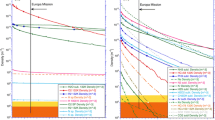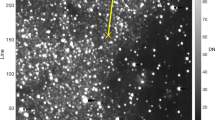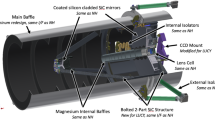Abstract
The engineering goal of the Deep Impact mission is to impact comet Tempel 1 on July 4, 2005, with a 370 kg active Impactor spacecraft (s/c). The impact velocity will be just over 10 km/s and is expected to excavate a crater approximately 20 m deep and 100 m wide. The Impactor s/c will be delivered to the vicinity of Tempel 1 by the Flyby s/c, which is also the key observing platform for the event. Following Impactor release, the Flyby will change course to pass the nucleus at an altitude of 500 km and at the same time slow down in order to allow approximately 800 s of observation of the impact event, ejecta plume expansion, and crater formation. Deep Impact will use the autonomous optical navigation (AutoNav) software system to guide the Impactor s/c to intercept the nucleus of Tempel 1 at a location that is illuminated and viewable from the Flyby. The Flyby s/c uses identical software to determine its comet-relative trajectory and provide the attitude determination and control system (ADCS) with the relative position information necessary to point the High Resolution Imager (HRI) and Medium Resolution Imager (MRI) instruments at the impact site during the encounter. This paper describes the Impactor s/c autonomous targeting design and the Flyby s/c autonomous tracking design, including image processing and navigation (trajectory estimation and maneuver computation). We also discuss the analysis that led to the current design, the expected system performance as compared to the key mission requirements and the sensitivity to various s/c subsystems and Tempel 1 environmental factors.
Similar content being viewed by others
References
Bhaskaran, S., Riedel, J. E., and Synnott, S. P.: 1996, Autonomous Optical Navigation for Interplanetary Missions, Science Spacecraft Control and Tracking in the New Millennium, Proc. SPIE, pp. 32.
Bhaskaran, S., et al.: 1998, Orbit Determination Performance Evaluation of the Deep Space 1 Autonomous Navigation Software, AAS/AIAA Space Flight Mechanics Meeting, Monterey, CA.
Kirk, R. L., et al.: 2004, Icarus 167, 54.
Riedel, J. E., et al.: 2000, Autonomous Optical Navigation Technology Validation Final Report, Deep Space 1 Technology Validation Symposium, February 8–9, Pasadena, CA.
Russ, J. C.: 1999, The Image Processing Handbook, CRC and IEEE Press.
Stooke, P. and Abergel, A. 2000, Halley Nucleus Shape Model, Personal Communication via M. Belton.
Trochman, W.: 2001, Impactor Spacecraft Attitude Knowledge Performance, BATC System Engineering Report, DI-IMP-ACS-010.
Weidenschilling, S. J.: 1997, Icarus 127, 290.
Zarchan, P.: 1997, Tactical and Strategic Missile Guidance, 3rd edn., Progress in Astronautics and Aeronautics, Vol. 176, AIAA, Reston, VA.
Zimpfer, D.: 2003, 26th Annual Guidance and Control Conference, February 6–10, Breckenridge, CO.
Author information
Authors and Affiliations
Corresponding author
Rights and permissions
About this article
Cite this article
Mastrodemos, N., Kubitschek, D.G. & Synnott, S.P. Autonomous Navigation for the Deep Impact Mission Encounter with Comet Tempel 1. Space Sci Rev 117, 95–121 (2005). https://doi.org/10.1007/s11214-005-3394-4
Received:
Accepted:
Issue Date:
DOI: https://doi.org/10.1007/s11214-005-3394-4




